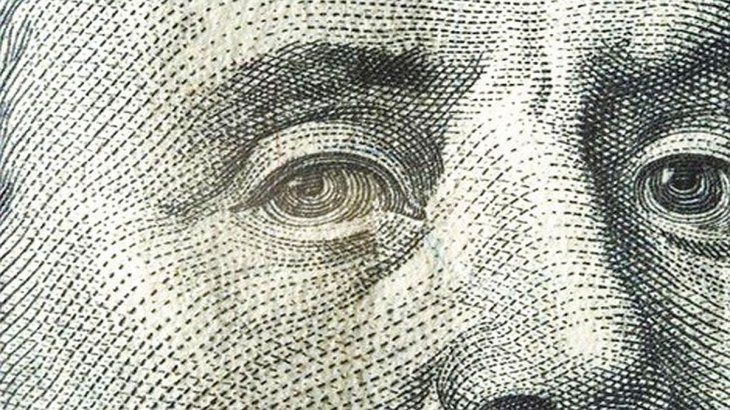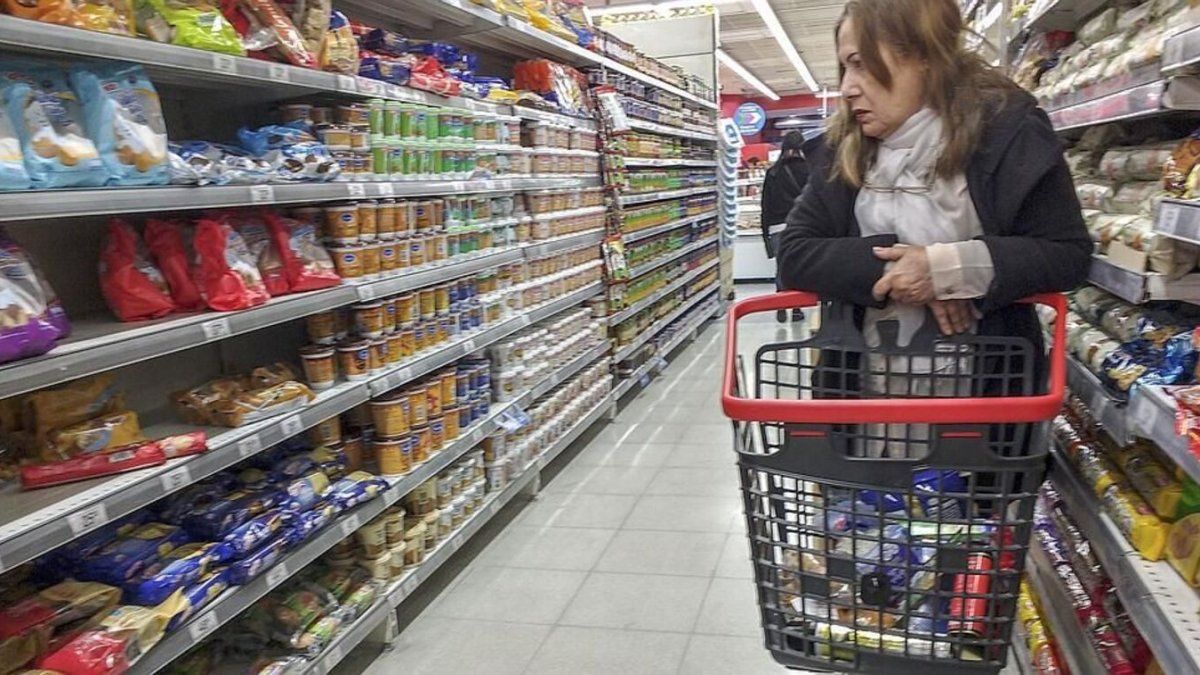The BCRA’s monetary policy is inflationary, since the Base increases when the Reserves fall. Even Monetary Liabilities do the same; which a priori tells us that the devaluation rate should be the same as the cost paid by the BCRA when it places debt. If we think that the exchange rate adjustment is 16% per year (so far this year it increases 12% against inflation of 37%) and that the Leliq rate is 38% per year, the dollar should increase 22%, that is, because of the differential.
The monetary issue In order to finance the Treasury, it is not only in full growth, but after the result of the PASO it is to be expected that there will be a renewed acceleration, especially when the 2022 Budget anticipates that the Primary Deficit of will be -4.5% of GDP. Such a bulky red conditions inflation and ensures that the Badlar rate will remain high to prevent the dollar from continuing to rise.
Pesos Dollars.jpg
An exchange adjustment below the rate at which the BCRA remunerates liabilities exhausts the ability to generate profits to transfer to the Treasury. The reasonable thing would be that post elections and until December 2022, the dollar increases between 55% and 60% (22% + 2.25% monthly), which should produce an additional inflation of around 16% to that already observed. If progress is made with an exchange policy of these characteristics, the exchange gap would be drastically reduced. Now, as there is no urgent need to liquidate liabilities, at today’s prices, instead of looking for a wholesale dollar, by the end of next year, in $160, well the BCRA could stand in $140 (20% + 1.45% monthly), thereby reducing the exchange rate gap to less than 50% in the first case and around the 50% for the second.
Now, no matter how much agreement there is, the restrictive monetary policy that will be in the world will affect the prices of raw materials, and the context of a shortage of dollars will make Argentina grow barely 3% in 2022 and 2,5% in 2023; still with an agreement with the IMF, given the production restrictions imposed by the import barriers (they are not transitory because there are no dollars). Without going further, not only has industrial activity been falling for two months, but the Leading Index shows no signs of an incipient recovery. Despite this, we believe that there is a chance that a window to do business will open towards the second quarter.
That the Government can be radicalized in the face of a new, and probable, bad electoral result is a chance but a low one, otherwise Manzur would not be setting up roadshows with investors. Thinking about this, along with the upcoming changes in the exchange rate, we must have dollar linked.
Our base scenario is a wholesale dollar by the end of 2022 Come in $ 140 and $ 160, values that imply monthly adjustment rates between 2.65% and 3.7%. Even in the highest case, buying the future dollar would be at a loss, limited to a -2,71% and recoverable in large part due to the profitability of the capacity of 20%. If we transfer the differential (-1%) to the sale prices of our goods and services, buying future dollars we will sleep peacefully in relation to the repayment of our debts in hard currency and the replacement cost for the money we have on the street receivable, gaining in commercial what we could lose in financial.
If we do this same exercise thinking that the dollar by the end of 2022 will be around $ 140, the future dollar hedge would only be positive if the initial one-shot of 20%-22%. If there were no initial jump and we took the exercises of the first quarter, the loss, discounting the profitability of the capacity, would be 4%. It is what we should increase our sales prices so that the profit from the commercialization of our goods and services compensates for the loss of buying future dollars. Now, the future dollar is when we have no funds; that’s why in case of having them, We must have dollar linked bonds (T2V2 and TV23) in our portfolio. ON must be left out except for liquid ones, like Vista Oil and San Miguel, since they will benefit from both a one-shot and periodic devaluations, without ruling out having CER-adjusted bonds in our portfolio.
Dollar Bill Eyes linked.jpg

The dollar had a new rise, despite the agreement with creditors.
Finansarg
Investment in CER Bonds it is justified in the absence of an anti-inflationary plan in a context of adjustment of the wholesale dollar. If there were one-shot from 20% to 22%, the maximum inflation that would be generated would be 7.7% and the maximum increase in T2V2 it would be 14% because it is currently trading above par. Now, the profit would not necessarily be that 14% because the day after the one-shot there will be an oversupply of T2V2, so a reasonable profit will be around 11%. A Bono CER it will benefit from the new inflation generated by the rise in the dollar (impact of 7.2%) plus the usual inflation, which shows a rise of 10.2%. The difference is that the CER will capture 7.2% of inflation caused by the exchange rate in 60 days, but during that period the CER adds the usual inflation. Not that the CER Bond is better than the Dollar Linked, is complementary because the latter is trading 6/7 points above par and as inflation does not start from 0% but from 3%, a monthly adjustment of 4% in the wholesale dollar will produce a floor monthly inflation of at least 4% , that is, post one-shot the CER and the Dollar Linked they are going to be even.
What the BCRA will not be able to do is work on the interest rate. As much as you want to lower it, you will not be able to do it because that will cause a currency run. Any decline has to be preceded by an agreement with the IMF and an increase in reserves (taking advantage of the fact that Santa Claus and the Kings are coming soon, if one of the four brings an economic plan, it would not be bad at all). This tells us several things: exchange rate slippage of at least 33% per year (Leliq rate minus North American inflation) so that the reserves converted to pesos have the same evolution as the remunerated debt; We will have to take advantage of the subsidized credits that we have and the discount of our own checks must be done exclusively for SGRs, taking advantage of the overdue rate structure against the advanced rate charged by the banks; The Bonds that adjust for Badlar, having an average IRR of 47.5% and duration of half a year, end up being instruments with low volatility, fast recovery and high interest rates.
Dollar MEP, Cash With Settlement (CCL) and Cedears
It must be borne in mind that the dollar is a business of gaps, so when what comes the adjustment of the lowest, which is the one that you look at and do not touch because you cannot buy or treasure, what we have to have in our portfolio they are assets that replicate that behavior or that are going to resemble it in terms of profitability. The physical dollar, which is the truly free (MEP and CCL) or the Cedears (adjusted by CCL) are the ones that have a chance of not winning until the adjustment in the wholesaler is consumed or is discounted from the prices of the assets.
On the side of dollar bondsThinking that there will be an agreement with the IMF and that devaluations always improve the country risk due to the greater coverage that Reserves have against Monetary Liabilities, the best bet is on the Santa Fe SFE23 bond, since it has a duration of at least 11 months and pays an IRR of 17.9% per year. It is true that the shorter sovereign bonds (29 and 30, which we also like) offer yields between 20.3% and 21.8% per year, but in these cases the duration is 5 years.
bovespa1.jpg

In electoral times, the shares rise (it must be because the hopes are placed that it will leave the ruinous circle), but in this case it may be different because when there is an expectation of exchange rate adjustment, the Merval has moved below the dollar wholesaler. That for local stocks they are entry prices, there is no doubt, but it is best to wait for the devaluation wave to pass. Anyway, we prefer Brazilian stocks, since the Bovespa in dollars is on a downward path because the end of the year presidential election between Bolsonaro and Lula does not have a clear winner, and since they are not the same for the market, there will be volatility . In any case, the strong decline that the Bovespa has been showing generates buying opportunities, since the shares of that country are trading at 2010 values.
President of Wise Capital.




